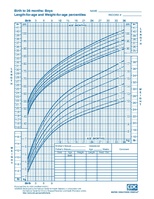
Photo from wikipedia
BackgroundWe estimated the associations between exposure to early life growth faltering at the population level and adult height and education outcomes in a sample of 21 low- and middle-income countries.MethodsWe… Click to show full abstract
BackgroundWe estimated the associations between exposure to early life growth faltering at the population level and adult height and education outcomes in a sample of 21 low- and middle-income countries.MethodsWe conducted a synthetic panel analysis of 425 birth cohorts across 126 regions in 21 LMICs surveyed in the Demographic and Health Surveys (DHS) both as children and as adults. Data from historic (1987–1993) DHS survey rounds were used to compute average height-for-age z-scores at the province-birth-year level. Cohort measures of early life growth were then linked to adult height and educational attainment measures collected on individuals from the same cohorts in the 2006-2014 DHS survey rounds. The primary exposure of interest was population-level early life growth (region-birth year average HAZ) and growth faltering (region-birth year stunting prevalence). Multivariable linear regression models were used to estimate the associations between adult outcomes and population-level measures of early life linear growth.ResultsThe average cohort height-for-age z-score (HAZ) in childhood was − 1.53 [range: − 2.73, − 0.348]. In fully adjusted models, each unit increase in cohort childhood HAZ was associated with a 2.0 cm [95% CI: 1.09–2.9] increase in adult height, with larger associations for men than for women. Evidence for the association between early childhood height and adult educational attainment was found to be inconclusive (0.269, 95% CI: [− 0.68–1.22]).ConclusionsWhile early childhood linear growth at the cohort level appears to be highly predictive of adult height, the empirical association between early life growth and adult educational attainment seems weak and heterogeneous across countries.RegistrationThis study was registered on May 10, 2017 at the ISRCTN Registry (http://www.isrctn.com), registration number ISRCTN82438662.
Journal Title: BMC Public Health
Year Published: 2019
Link to full text (if available)
Share on Social Media: Sign Up to like & get
recommendations!